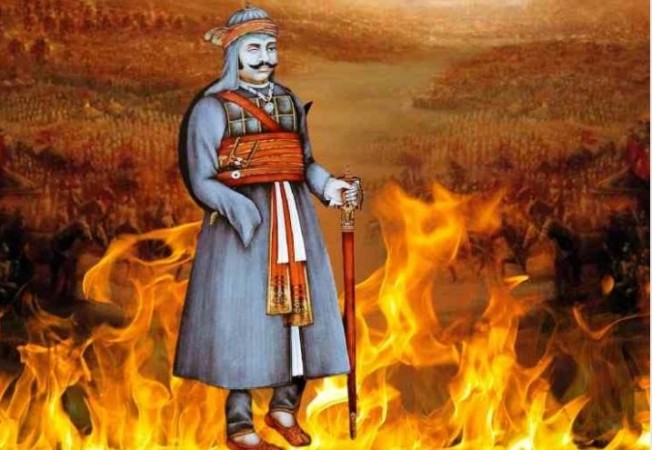
Maharana Sangram Singh Sisodia commonly known as Rana Sanga, was an Indian ruler of Mewar and head of a powerful Rajput confederacy in Rajputana during the 16th century.
He was a grandson of Rana Kumbha and grandfather of Maharana Pratap Singh. His wife was Rani Karnavathi. He had 4 sons. They are Bhoj Raj, Ratan Singh II, Vikramadithya Singh, Udai Singh II. Rana Sanga fought against the Afghan Lodhi dynasty of Delhi Sultanate, and later against the Turkic Mughals of Ferghana.
Rana Sanga fought against the Afghan Lodhi dynasty and the Ottoman Mughals during his lifetime. At their peak, their dominions included present-day Rajasthan, northern Gujarat and western Madhya Pradesh.
Maharana Sangram Singh Sisodia was born on 12 April 1482 at Chittor, Rajasthan. He was an Indian ruler of Mewar and head of a powerful Rajput confederacy in Rajputana during the 16th century. His father Rana Raimal was king of Mewar (1473–1509) whose rule over malwa region.
The Rana expanded the boundaries of his Kingdom through war and diplomacy with the goal of forming an empire which was governed by a confederacy of ethnic Indian kings, irrespective of their religion. He expanded into North East Rajasthan after defeating Ibrahim Lodi in the Battle of Khatoli and Battle of Dholpur.
As a result of his conviction, Sanga reconciled the feuding Rajputana clans, resulting, 300 years later, in the formation of a strong Rajput confederacy. Rana Sanga was the most powerful ruler in Hindustan at the time of his invasion, according to Babur, the creator of the Mughal Empire, who writes in his memoirs that "he gained his present lofty glory by his heroism and sword." Following them into battle were 80,000 horses, 7 Rajas of the highest rank, 9 Raos, and 104 chieftains with the titles of Rawal and Rawat, together with 500 war elephants. According to legend, Sangha engaged in 100 battles and sustained injuries including shattered arms, legs, and eyes.